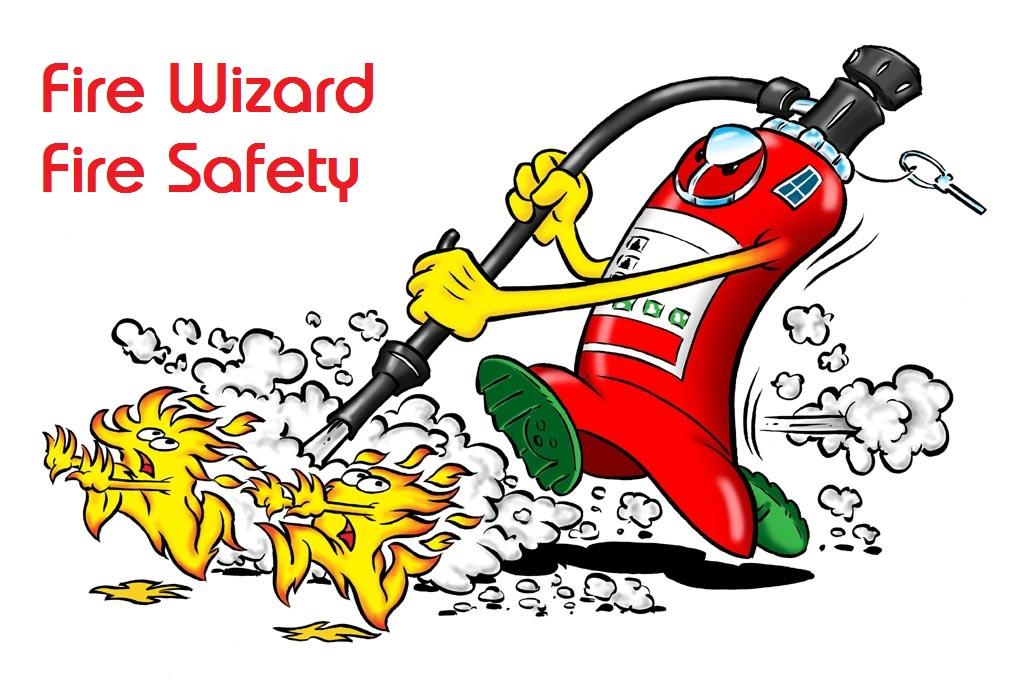-
Posts
2,707 -
Joined
-
Last visited
Everything posted by AnthonyB
-
- 34 replies
-
- flats
- self contained
-
(and 1 more)
Tagged with:
-
Powder and gaseous extinguishing agents are generally accepted as non conductive on all voltages - liquid based agents have also been tested to high voltage (35,000V) but in practice are marked for up to 1000V to give safety margin.
-
Check with BWF/Certifire & BM TRADA who operate the certification schemes - they should be able to advise if certification is current.
-
Doesn't sound correct, best consult your local Fire & Rescue Service who can enforce these issues.
-
Yes, but they do that automatically and report if they fail (either to the control panel if an integrated network or via the coded LEDs on the fitting if self contained). Just inspect them visually (& the control panel where fitted) monthly and act on the faults indicated (if any)
-
As your posting was delayed I believe we have all answered you sufficiently on FireNet. Fire door blanks are often used when not required, it can be for matching purposes, economy of scale on bulk buying the same blank, to increase contract value and much more!
-
If an existing building it would not be unreasonable for a risk assessment to accept that scenario, ideally the 4 should be staff and not the public.
-

Internal Sliding Door Leading To A Fire Escape/Main Entrance and Exit
AnthonyB replied to a topic in Fire Exits
Out of hours when the building is empty you can lock the door. -
Contact this company - https://envirograf.com/ they specialise in products for upgrading heritage doors, walls, floors and ceilings, have had certified the use of their solutions in many situations and have a Technical Department that will give advice on particular doors, etc. Most other places will just say new frame and door required - which is not always the case.
-
How long is the corridor, is it in the same occupancy and what detection is present? They may not need to be fire doors onto the corridor
-
If we were anywhere else in Europe they would all say "Safe for direct use on electrical equipment up to 1000v at 1 metre" after passing a safety test that ensures a suitable resistance in the discharge stream when sprayed on a metal plate with 35,000V running through it because the manufacturing standard EN3 says this. The UK trade doesn't like this as it stops them selling extra extinguishers for electrical fires (really!) so many brands omit the 'safe for direct...' phrase and just rattle on about a 35,000V conductivity test (which will mean nothing to most users) even though the same manufacturing standard is used, although some models (Water Mist, P50 Triclass) do follow the correct 'safe for direct use...' marking. Others vary batch to batch! The 1000V is partly to give a margin and partly because there are general hazards with high voltage fires such that only specialist personnel should be dealing with them
-
Yes, they are completely wrong in many aspects - The riser shaft will have been constructed as a 'protected shaft' as per Building Regulations (both then and now). It will be constructed of fire resisting wall material and access doors should be fire doors. There is no requirement to stop at each floor level - Any horizontal penetration does need to be fire stopped to maintain the integrity of the shaft, this work would need looking into but is a lot less of an issue than trying to stop the floors (extortionate cost) - The fire alarm was never needed, the standards in a purpose built flat block from a 1985 build would generally suit stay put. It is not by itself indicative of a need for a simultaneous evacuation procedure, just an indicator for a closer investigation of the premises. - A lot of assessors try and cover themselves by asking for a Type 4, which is an unusual one off exercise where there appears to be serious issues with the structure (often in pre 60's builds and even then not too commonly needed) Does the report show that they inspected a sample of flat front doors? Even the most basic type 1 communal FRA should do this (and should have done even before Grenfell). Does it address smoke control provision or lack of (which doesn't mean you need to retrofit). I'm just wondering what it's looked at. For the record - Principle fire consultant for a BAFE SP205-1 third party certified life safety fire risk assessment provider, Individually registered Tier 3 (High Risk/Complex Premises) on the National Fire Risk Assessors Register and holder of Advanced FRA in Residential Premises certification - so I do have some experience with this!
-
The Part 6 residential alarms total price is around the average total cost based on two flats using Checkatrade's guide. The detectors alone would add up to half that alone (if using radio linked mains units and installing to LD2 with at least 2 devices per flat) The Grade A communal system is also on average, although there are no sounders listed on the summary - to be compliant there should be sounders off this system to the stair AND each flat It seems the money is weighted onto the cost of the aesthetic only containment (white trunking) which is ridiculous. I'd also lift the trunking and check that the actual cables are secured to the wall by metal clips every 300/400mm as required - often surface trunking is used so extra can be charged whilst time and money is saved in not clipping the cables correctly. You can work out the actual costs here https://www.screwfix.com/c/electrical-lighting/cable-trunking/cat1910006
-
The builder is unlikely to have the required competencies and seems to be creating a shopping list each time (if they were you wouldn't have had the extinguishers fitted as never needed). The meters should be in a non combustible housing (if not metal) but this doesn't have to be a cupboard - see https://envirograf.com/product/electrical-consumer-unit-and-distribution-board-fire-protection-system/ Even if you had a cupboard you wouldn't need a Fire Brigade padlock, particularly as the residents need access. A domestic fuse board doesn't need rubber matting and most agents save on the cost of matting where it is recommended by making it a requirement for contractors to provide their own. You don't need an accident book, it's not a workplace. You don't need fire action notices as long as residents are made aware of the fire policy (plus they'd no doubt fit the wrong ones meant for commercial 'full evacuate' buildings) plus as a notice it can be printed off and laminated and doesn't have to use safety sign colours or pictograms I strongly suggest you report your concerns on the restaurant to your Fire & Rescue Service's Business Fire Safety unit as this presents the biggest and most real danger to you (as oppose to the electric meter) - they will take action to correct the various serious issues that seem to be there (& won't say it's you telling them)
-

Flat fire door for private entrance
AnthonyB replied to Nibarb's topic in Fire Doors and Accessories
As long as the front door is going to be part of a FD30s fire resistant door set there should be no problems in finding someone to fit it. If you are wanting to fit a non fire door I can understand no one wanting to be involved. Plenty of specialist fire door installers out there if you are stuck. -
Depends to some extent on the brand and type of equipment and the mark up on product as well as labour rate. How long did it take for them to install it?
-
Are these above ground floor commercial units with access via a rear external stair?
-
Off my patch sadly, I travel a lot but don't do London anymore as we've got people down there now. There is a fire risk assessors facebook group you could ask on as well as Firenet's forum
-
Where in the country are you?
-
Assuming this is a private house and not used as commercial sleeping accommodation then you can have whatever you want. A suitable extinguisher in the kitchen and on each main landing would be in line with the old guidance for private homes - instead of a cluttering of types you could just use 1.4L water mist https://www.safelincs.co.uk/1-litre-water-mist-fire-extinguisher-ultrafire/ or if you want something you can maintain yourself a 2 litre of either of these: https://www.safelincs.co.uk/p50-service-free-foam-fire-extinguishers/ or https://www.safelincs.co.uk/p50-service-free-water-mist-fire-extinguishers/
-
The law states that anyone who is competent can carry out the FRA. However in many cases other than small to medium commercial premises the Responsible Person chooses to use external competent persons, ideally third party accredited. As a conversion (from a house by the sounds of it) the guidance you would need to follow is: For principles of fire risk assessment in Sleeping Risk premises: https://assets.publishing.service.gov.uk/government/uploads/system/uploads/attachment_data/file/422192/9281_Sleeping_Accomodation_v2.pdf For the detailed technical requirements in your particular premises: https://www.cieh.org/media/1244/guidance-on-fire-safety-provisions-for-certain-types-of-existing-housing.pdf Read these and if you feel competent to use them go ahead. No standard template exists, there are many free ones on the internet (some good, some less so)
-
Except that in a stay put block that situation should never exist and if the smoke layer is such you can't see a door mat then you have more important things to worry about such as living for more than 60 seconds...
-
Easier to compare traditional benchmarks (ADB, DCLG Guides, LGA, etc) with either BS9999 or an engineered and modelled BS7974 solution. I'd guess it want's a review of prescriptive v flexible guidance/codes and the pros and cons of each.


